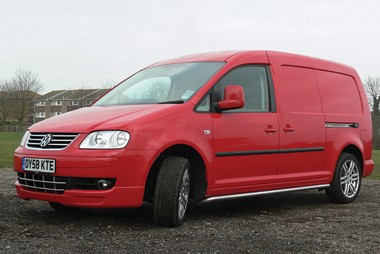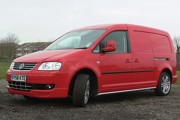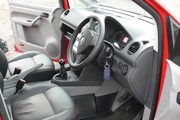Review
Remember those halcyon days when businesses were booming, banks were solvent and everything in the LCV industry was rosy and bright? Doesn’t it seem a long time ago?
In those heady times, lots of small firms were expanding and one-man bands were buying smart new vehicles that told the world their drivers were upwardly mobile.
That was when Volkswagen laid plans for an exciting range of Caddy, Caddy Maxi and Transporter vehicles labelled Sportline, boasting delights such as alloy wheels, chrome grilles and bodykits.
It was unfortunate for VW that by the time these vehicles hit British shores, the economy seemed to be in freefall and van sales collapsed. So under these straitened circumstances, will the van on test here – the Caddy Maxi Sportline 2.0 TDI – be a success? It’s anyone’s guess.
For the purposes of this test, I’ll ignore the economy – it’s hardly fair to add or subtract points for a new vehicle just because something completely outside its remit has occurred.
Suffice to say, if you can afford to splash out the cash, you won’t find much in the van world for £18,280 ex-VAT that looks as smart as the vehicle on test here.
For that price you get a splendid range of standard features that include air-conditioning, electric heated mirrors, electric windows, remote central locking, ABS brakes electronic braking control, electronic brakeforce distribution, traction control and a driver’s airbag, alloy wheels with low-profile tyres, a bulkhead, leather upholstery and chrome side rails.
Under the bonnet goes VW’s 2.0 TDI powerplant, pumping out 140bhp at 4,000rppm and 236lb-ft of torque at 1,800-2,500rpm.
That translates to a 0-60mph time of 10.1 seconds and a top speed of 116mph. Claimed fuel econ-omy on the combined cycle is 45.6mpg and CO2 emissions are 165g/km.
At the business end, the Caddy Maxi weighs in at 2,222kg gross
vehicle weight and offers a payload of 724kg and a load volume of 4.2 cubic metres.
Behind the wheel
You’ve only got to look at the pictures accompanying this article to realise that no red-blooded male could ignore a van like this. It looks superb with those bits of chrome trim and stunning pillar box red paintwork.
True, it’s not exactly your run-of-the-mill fleet vehicle but – with a few decals on the sides – such a van will speak volumes about the company that owns it. If you want to present an upmarket image of yourself, I couldn’t think of a better way of doing it.
Regular readers will already know about the Caddy as we’ve written volumes about it in the past.
It has that typical hewn-from-rock quality you expect from VW and is a past winner of the Fleet News small van of the year award in addition to being shortlisted in the first Fleet Van awards last year in the best small van sector.
Looking at the load volume first of all, it’s amazing to see how vans in this sector have suddenly grown.
The Caddy boasts a volume of 3.2 cubic metres, but the Maxi version tested blows the volume up to 4.2 cu m – more than was offered in vans of the next size up until recently. So if space is your requirement, the Caddy Maxi should fit the bill nicely without going for a true panel van.
I must point out here, however, that the Caddy Maxi is somewhat trounced by the arrival of the new Citroën Berlingo/Peugeot Partner, which are both offering not only a similar stretched back end but three seats in the front too.
The small van sector has suddenly became a hard-fought battleground.
Climbing aboard, the cab features a massive dashboard that looks as though it’s been carved out of a solid block. It’s not particularly stylish but looks as though it’ll last a thousand years.
There are more cubby holes and cupholders than you’d usually find in a van this size, including a handy overhead storage rack.
The seats are mighty comfortable on long journeys, with plenty of lumbar support. Mind you, for fleet purposes I couldn’t possibly recommend splashing out on leather seats.
The rear cargo area is accessed either by twin side sliding doors or asymmetric rear ones and inside there’s a wipe-clean plastic floor and half-height lining.
There are also six load-lashing eyes and a cup holder and plastic tray on each side.
Firing up the engine reveals a fair amount of noise, which carries on when the van is underway.
But such annoyances are forgotten when the full force of that power and torque are felt – those low- profile tyres ensure full grip round the corners at any sensible speed.
Top marks to Volkswagen for making traction control standard –
I hope it’s a move other manufacturers follow.
Verdict
What a van – a wondrous mixture of style, utility and brute force that will delight anyone with a penchant for enthusiastic driving. I really didn’t want to give it back.
It’s just a shame that the financial catastrophe that has engulfed the world could prevent Volkswagen achieving its true sales potential.



















